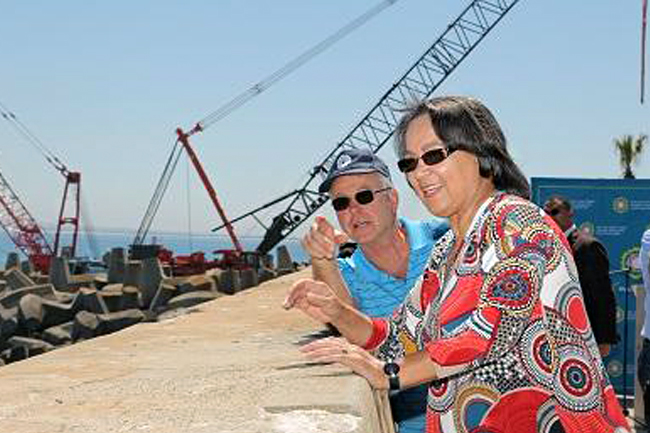The first desalination plant, as planned by the City of Cape Town in August, will begin construction next month at a site close to the V&A Waterfront. It is expected to be operational as early as February next year.
Mayor Patricia de Lille visited the site on Sunday – upon completion the new plant will produce 2-million litres of water a day to assist with the severe water crisis in Cape Town.
The V&A Waterfront made the land available to the City at no cost. “A good example of how government and businesses can work together to ensure our water resilience. We will not allow a well-run city to run out of water. The City is securing our water resilience through saving and bringing more alternative water sources into our network,” the Mayor said at yesterday’s site inspection.
Water will be abstracted from the ocean on the harbour side of the pier, treated at the desalination plant and the clean water will be pumped into the City’s water network near the site. Alternative sources of water are being investigated to help supplement the production. One such water source is the temporary desalination plant the City is building on East Pier Road in the V&A Waterfront.
In addition, eight other modular-based desalination plants have been allocated by the City:
- Hout Bay – to produce 4-million litres per day
- Granger Bay – to produce 8-million litres of water per day
- Red Hill/Dido Valley – to produce 2-million litres of water per day
- Strandfontein – to produce 7-million litres per day
- Monwabisi – to produce 7-million litres per day
- Harmony Park – to produce 8-million litres per day
- Cape Town Harbour – to produce 50-million litres per day
- The universal sites – to produce 20-million litres per day
On Friday the City awarded the tenders to the desalination plants at Strandfontein and Monwabisi.
In light of the Western Cape’s worst drought in over a century, dam storage levels were at 38.5% and daily water usage at 585 million liters of water per day. Pre-restriction daily levels were on 1.1-billion liters.
Photography Supplied







